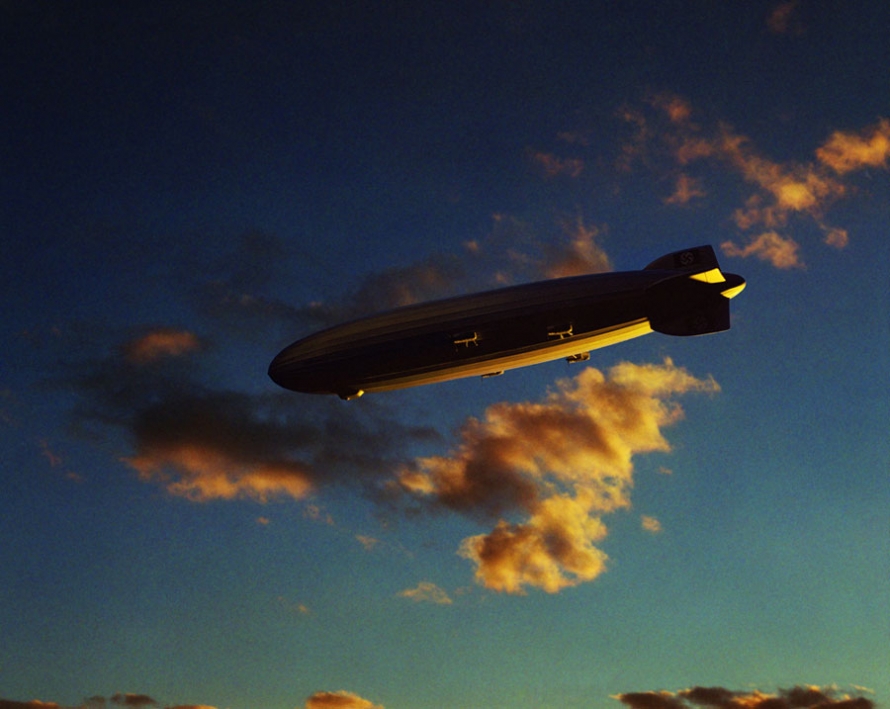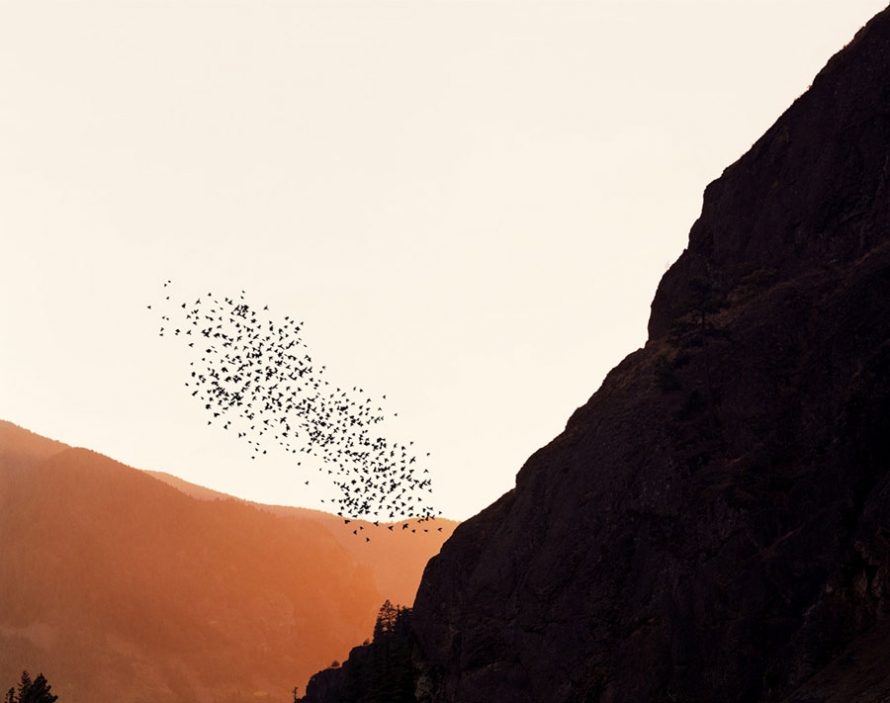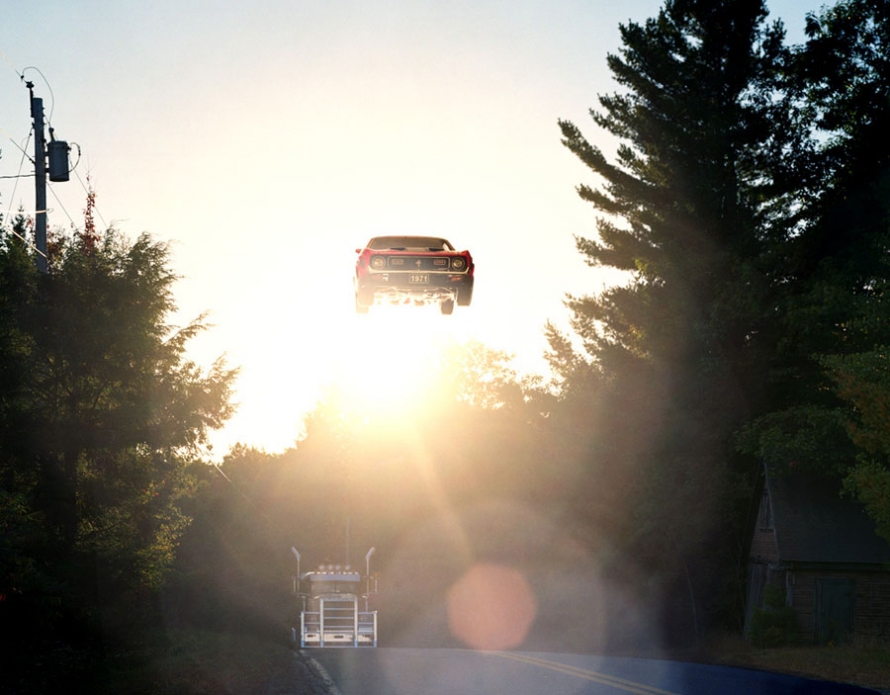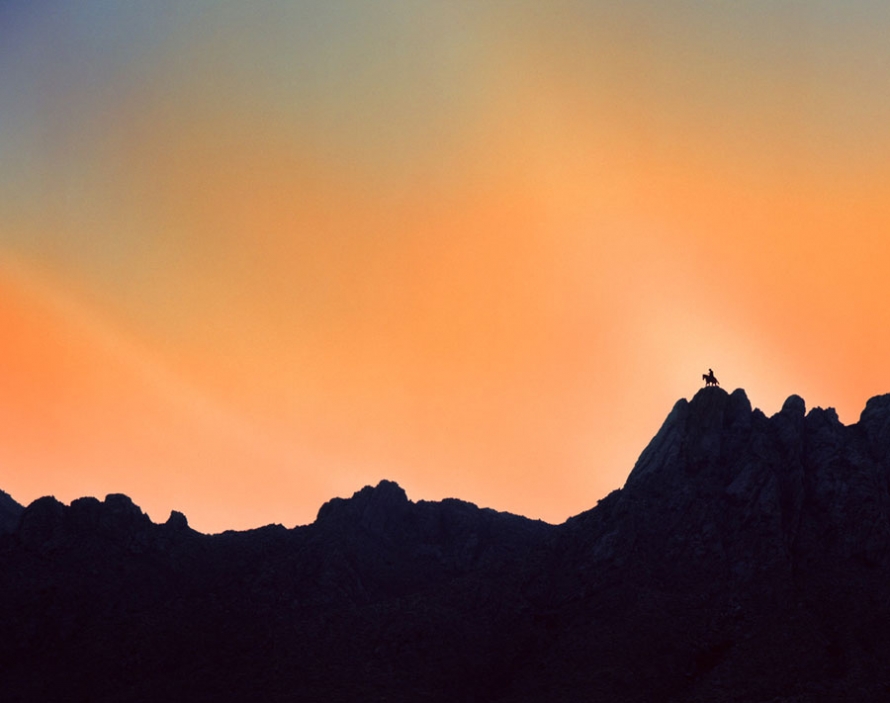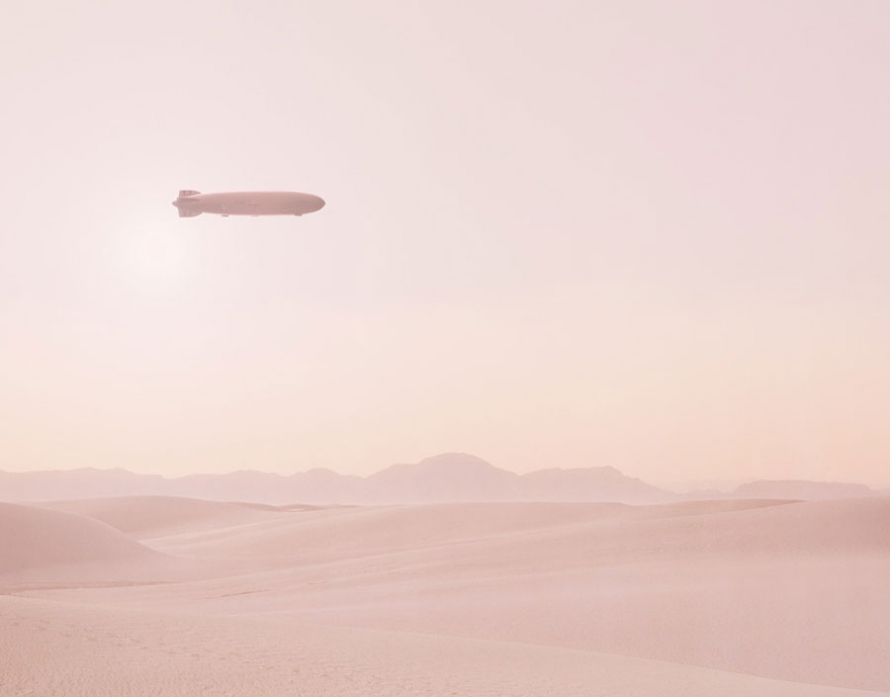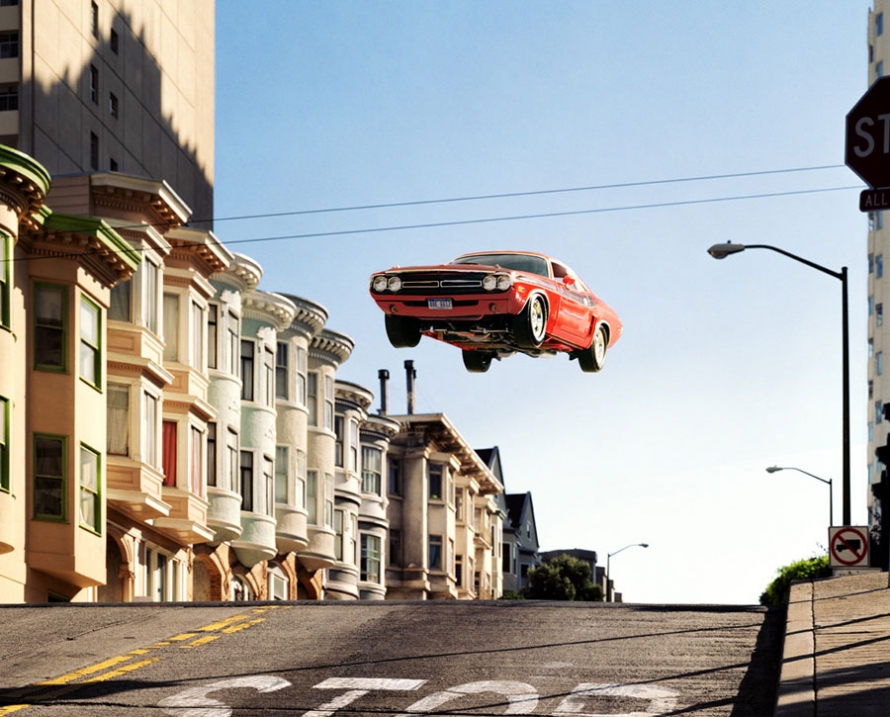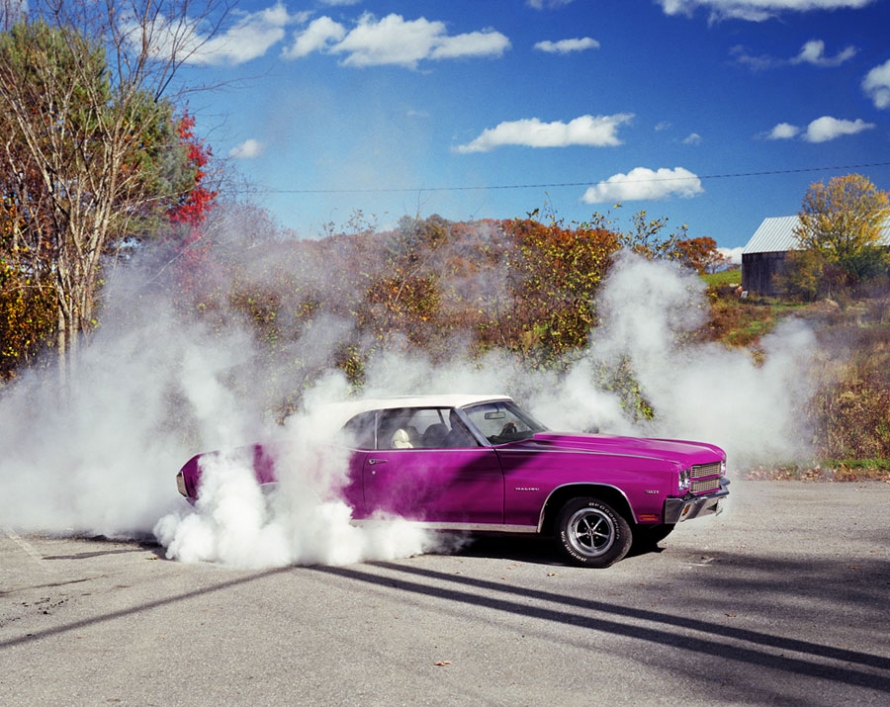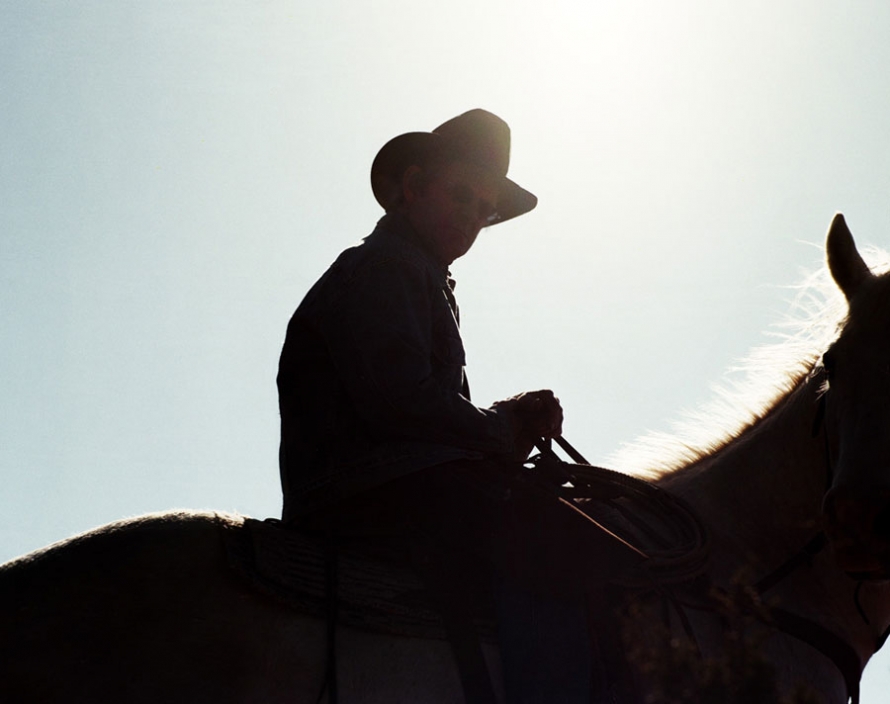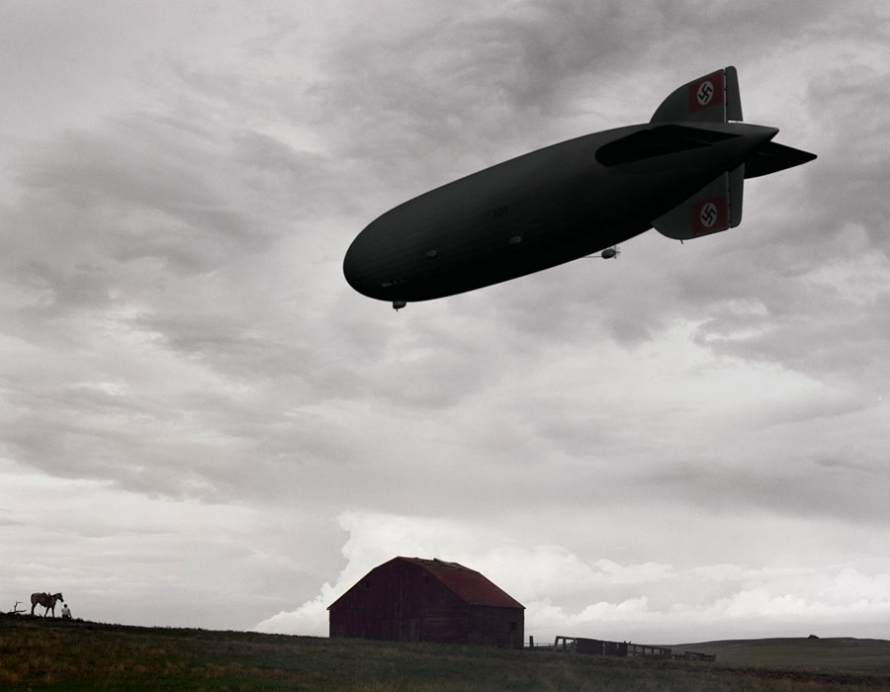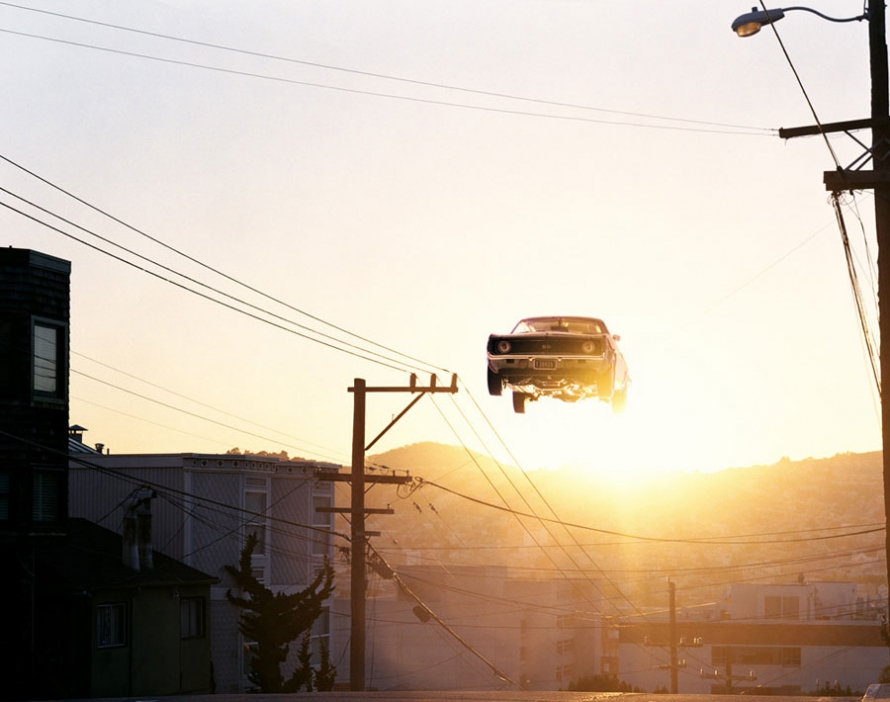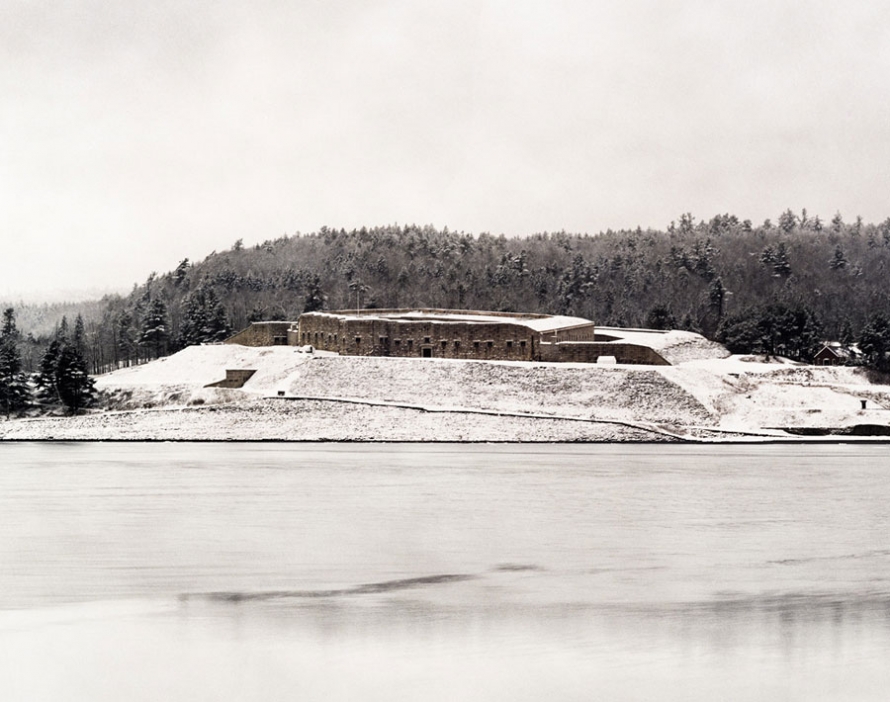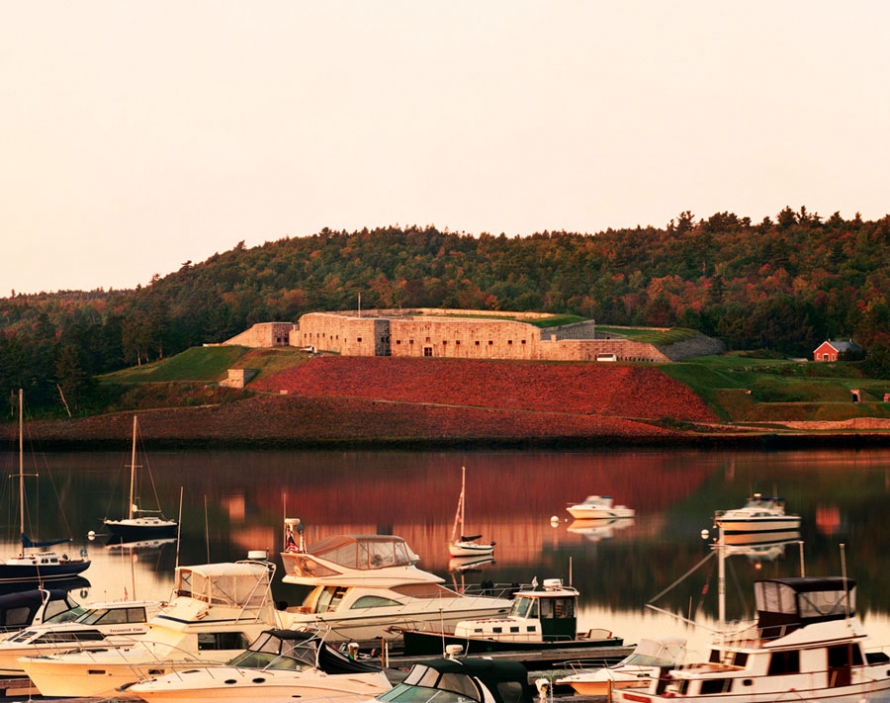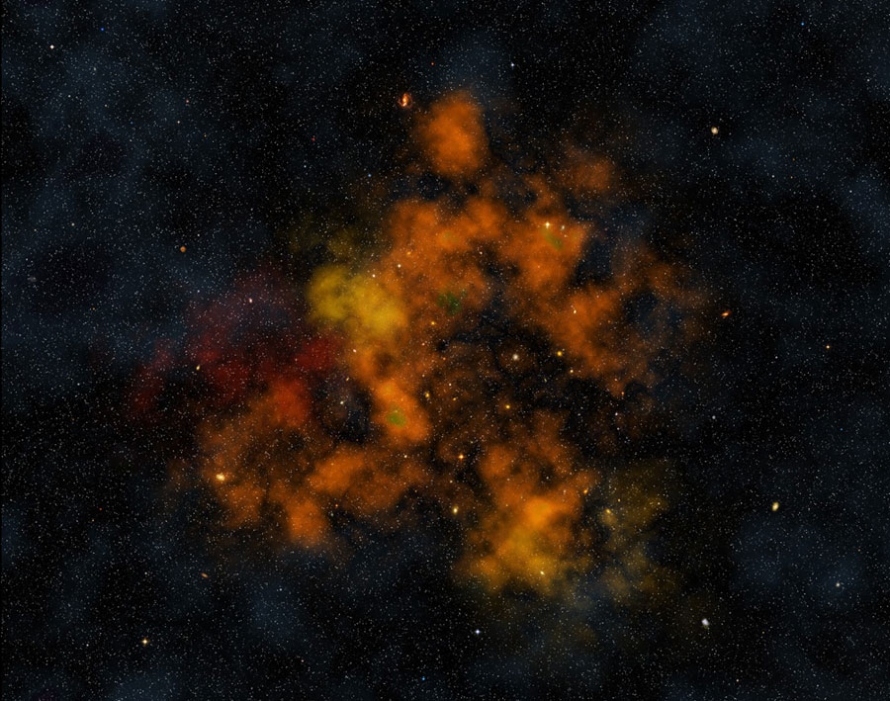Photographer Matthew Porter goes big on concept, but fine on details. His pictures are arresting for their feelings of stillness—at a car chase’s peak moment, or while the Hindenburg floats over the American West—as well as the crisp colors and punctilious construction. It’s a studied spontaneity, a way to make portraits of frozen energy, of time put on pause.
Matthew Porter was born in State College, PA in 1975. He holds a BA from Bard College and an MFA from Bard/ICP. His exhibition “Startled Birds” was presented by the 2008 SCOPE Art Fair in Miami, and he recently participated in group shows at Hudson Franklin and New Century Artists in New York. He has contributed work to Modern Painters, Topic, Tokion, and New York Magazine. He lives and works in Brooklyn. All images copyright © the artist, all rights reserved.
In many of the pictures, there’s an affection for wide-open spaces and grandeur, even myths: big skies, flying cars, floating blimps, cowboys. Do you find photography well suited for capturing big ideas?
Overall, I would have to say no. I’ve had to use quite a bit of Photoshop and travel to different parts of the country to make those images. It would be easier if I could make the work from scratch, or appropriate the imagery, but because I’m interested in authoring my own source material, I need access to the subject. Sometimes I feel like photography is not the best medium for the work I’m making, but I’m determined.
The flying cars have garnered a lot of attention. Where did they start for you? Are you still interested in them?
I was inspired by ‘70s road and car chase movies to make something with muscle cars, but I couldn’t get away from a documentary style project. Then I happened to see the end of the Starsky & Hutch remake, where the car freezes in mid-air while lens flares splash over the hood, and I realized that’s what I wanted. Then it became a problem of how to do it on a small budget.
I like them because they represent iconic moments that have very little with telling a story. No one ever talks about how Bullitt is a police procedural, but I see stills from the car chase reproduced all the time; the imagery is vivid enough to remain, and they play directly to the imagination. When I get an opportunity to install work somewhere, I like the flying cars to function the same way, so they should never be shown all together. I’ll probably continue to make them, maybe one every year for a while.
Do you have a special appreciation for how things are made? How they’re constructed? I’m thinking about the portraits of the tools, the wasp nests.
Yes, although I had other aspirations for that work. The pictures of tools and workspaces that you’re talking about were going to be paired with portraits of women singer/songwriters as kind of a testament to the erstwhile connection between folk and rock music and the manufacturing base. Actually, I think I meant the connection to be sweeter than that. I photographed the nests to augment a series of photographs I made of the original Fort Knox in Maine. The fort never saw any action, so it’s a historical landmark without any real historical significance, and in a way emasculated. The nests are the feminine companion pieces—they have this disconcerting hole and they’re actually quite delicate.
What sort of frustrations do you run into? What kind of limits when you’re trying to create?
It’s financially exhausting to continually make work that requires props, travel, and high-end finishing. That’s not to say that my work necessarily requires a lot of money to make, a lot of things are shot hanging from string in my kitchen. The larger frustrations have more to do with how to get what can at times look like very glib, substance-less work exhibited in the right context.
Are you a lover or a fighter?
I wish I were living in LA in 1970, writing and recording long, heartfelt works of disillusionment.
What are you working on now?
The new work is tentatively titled “High Lonesome”, and it’s sort of an absurd mash-up between the Hindenburg and the American West. I’m in the process of building some Hindenburg related objects so that I can photograph some details, and I’d like to take another trip out west this spring.
